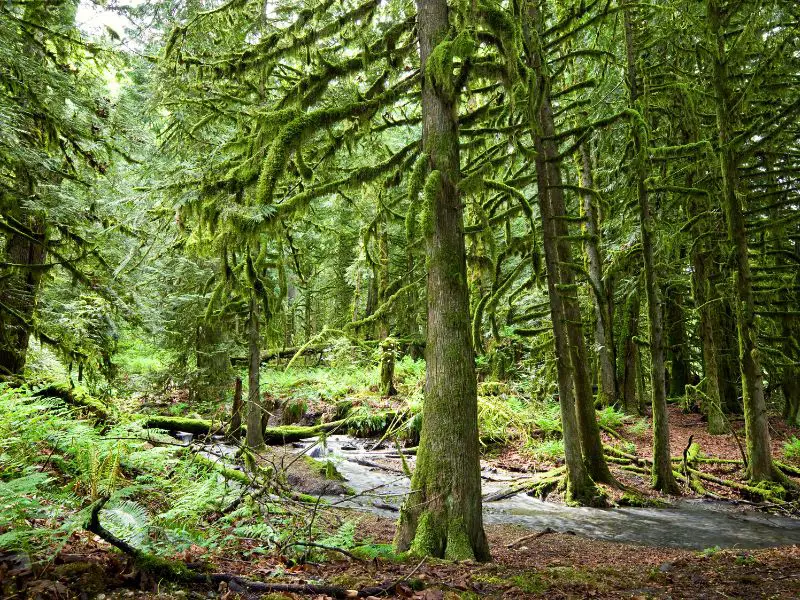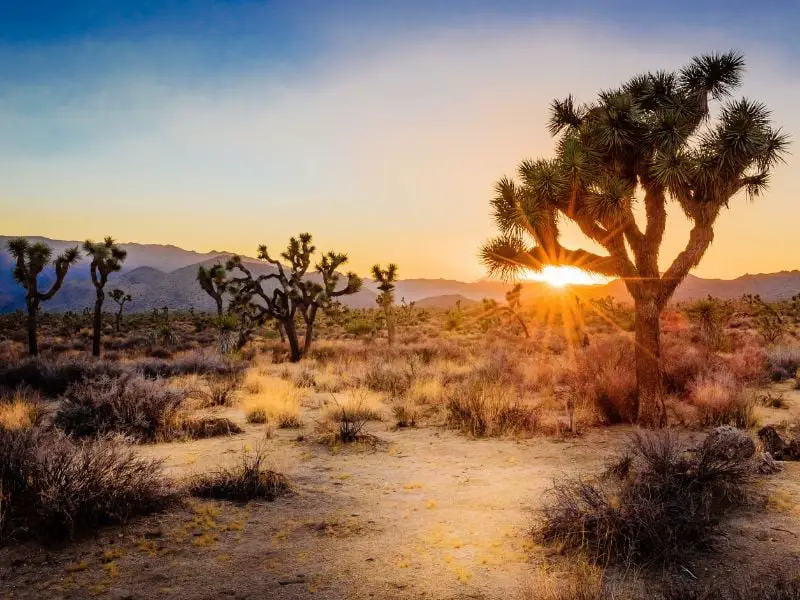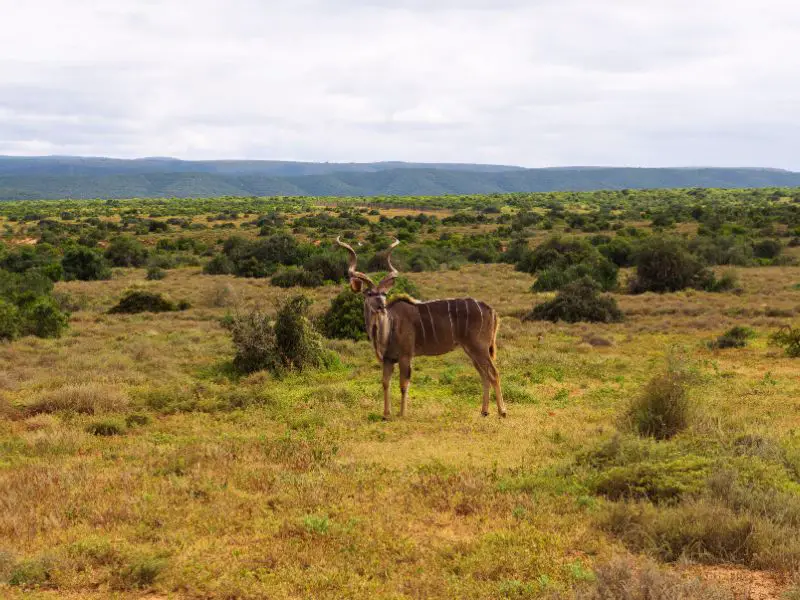Energy is essential to the survival of every living creature. Different kinds of food provide organisms with the fuel they need to function. The energy from the sun, the carbon dioxide in the air, and the water plants take in allow them to produce their nourishment. To get energy, animals, and insects consume plants and the bodies of other creatures.
This results in the production of waste, which is then consumed by bacteria and other microorganisms. This phenomenon is known as the cycle of matter and energy transfer. But to learn more about this cycle, it’s better to do so by studying food webs.
We’ve all heard of food chains. They are the links that connect us to the plants and animals we eat, the plants and animals they eat, and so on, to the smallest insects and beyond. However, food webs are slightly different. In this article, we’ll look at the basics of food webs, examples of food webs, and how humans affect food webs.

Basics of Food Webs
You can start understanding a food web by figuring out what the main groups of parts are and what they do. The sun, water, and air are the three most essential parts of a food web. The sun’s job is to give off energy, which the producers (plants) use to make food for themselves. Then, they give that food to the other animals in the food chain.
Many creatures in the food chain, particularly plants, rely on clean water for survival. There would be no trees or forest if there weren’t any water. In the same vein, they would perish without oxygen. Like humans, plants breathe carbon dioxide via their lungs and exhale oxygen through their leaves. The oxygen released by plants is essential to the survival of many organisms.
Living beings are the fourth and most crucial component of a food chain. Food webs can be categorized into three functional groups:
1. Producers
Producers are photosynthesizing organisms. Any green plant can be a producer. Green plants get their food from the sun, which they use to turn into sugar. This sugar also called glucose, is used by the plant to make many things, like wood, leaves, roots, and bark. Producers include trees like the mighty oak and the grand American beech.
2. Consumers
Consumers are any living being that isn’t capable of producing their food. Consumers have no choice except to eat either the producer or other consumers.
Deers are good examples of consumers because they are herbivores who eat plants. Similarly, bears are an excellent example of consumers. Like skunks and raccoons, black bears are omnivores and scavengers, meaning they will eat almost everything. Black bears’ diets in forested areas often consist of blueberries, insects, acorns, and many other nuts.
3. Decomposers
Decomposers are organisms whose primary diet consists of dead organisms or the waste products of live ones. Decomposers are the trash collectors of the animal world; they break down all the deceased animals and plants (consumers and decomposers) into their nutritional components so that plants may use them to produce new food.
All these groupings are essential in balancing and supporting one another.
Examples of Food Webs
There are food webs in many different biomes. Each food web is a little bit different because each habitat is different.
1. Desert

Deserts are places with very little water. Only some deserts are hot too. Some deserts get very cold at night. Here’s what you can find on the deserts food web
Producers: Joshua trees, cacti, brittlebush, creosote trees, and a variety of low grasses
Primary Consumers: Kangaroo rats, lizards, and insects.
Secondary Consumers: birds and scorpions
Tertiary Consumers: Hawks and Vultures
2. Forest

Forests are home to tons of trees and full of all kinds of vegetation for animals to feed on. Here are different players of the forest food web.
Producers: Plants, fruits, nuts, seeds, flowers
Primary Consumers: large herbivores like deer as well as insects, rabbits, and rodents
Secondary Consumers: Foxes, but ants, fish, spiders, snakes, and rats
Tertiary Consumers: Coyotes, eagles, owls
3. Savanna

A savanna environment offers abundant grass for grazing animals. There are examples of these environments in Africa, Australia, and possibly South America. Here are some players on the savanna food web.
Producers: the sun, trees, shrubs, and grasses
Primary Consumers: zebras, gazelles, antelopes, and giraffes
Secondary Consumers: lions and cheetahs
Tertiary Consumers: Hyenas
4. Marine

Aquatic species like diversity as well. The food chain in a maritime setting includes the following examples:
Producers: bacteria, phytoplankton, and algae
Primary Consumers: zooplankton, small fish, and crustaceans
Secondary Consumers: sardines, herring, cod, and coral
Tertiary Consumers: tuna, barracuda and groupers, seals and sea lions, jellyfish, dolphins, moray eels, turtles, sharks, and whales
Things That Threaten Food Webs
People are a big reason why food webs in ecosystems worldwide are getting weaker. When people build roads and other developments where animals live, they make it harder for the animals to get the food and other things they need to stay alive. This can make predator animals move to different ecosystems to hunt, putting food webs in their original homes at risk and putting food webs in other places at risk.
Aside from the development of properties in and around forest areas, pesticide usage in unoccupied regions might result in a phenomenon known as bioaccumulation, which leads to web food destruction.
What’s the Impact of Bioaccumulation on Food Webs?
Pesticides, herbicides, fungicides, and other artificial chemicals, as well as industrial runoff from industries, significantly impact the food chain. It is the producers that end up bearing the brunt of the pollution that is dispersed across an ecosystem. Then, these compounds end up in the stomachs of herbivores and omnivores. When carnivores prey on herbivores and omnivores, they consume the chemical pollutant inside their bodies.
The accumulation of this chemical inside the bodies of wildlife is called bioaccumulation. Pollutants can build up in wildlife to such a high level that they can be passed on to organisms that we’re never in the environment where the pollutants were first put. The pollutants have a wide range of adverse effects on the surrounding fauna. They are more prone to sickness and disease, and they distribute poisons to other ecosystems as a result.
Bottomline
Food webs are vital components of a healthy ecosystem. They consist of many organisms that all need to work together to survive. Animals use plants as a source of food, plants use water to gain energy, and the sun gives off energy for plants to use to give food to the rest of the food chain.
All living things rely on each other to survive and live healthily in the wild. We hope our article helped you learn a little more about food webs and how these food systems are vital to wildlife and the planet.
Related: Threats to Biodiversity, Most Powerful Superfoods, Largest Forests in the World

